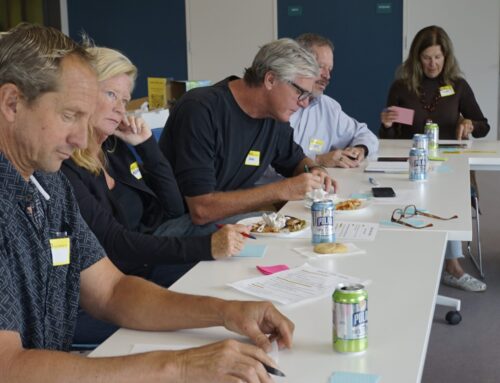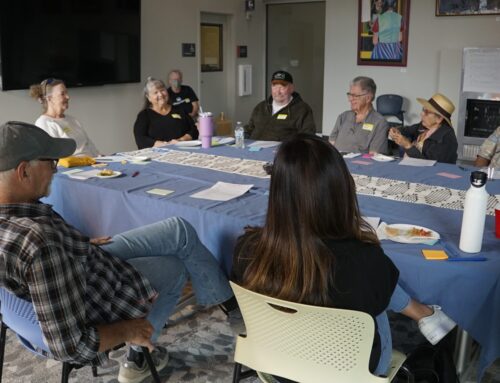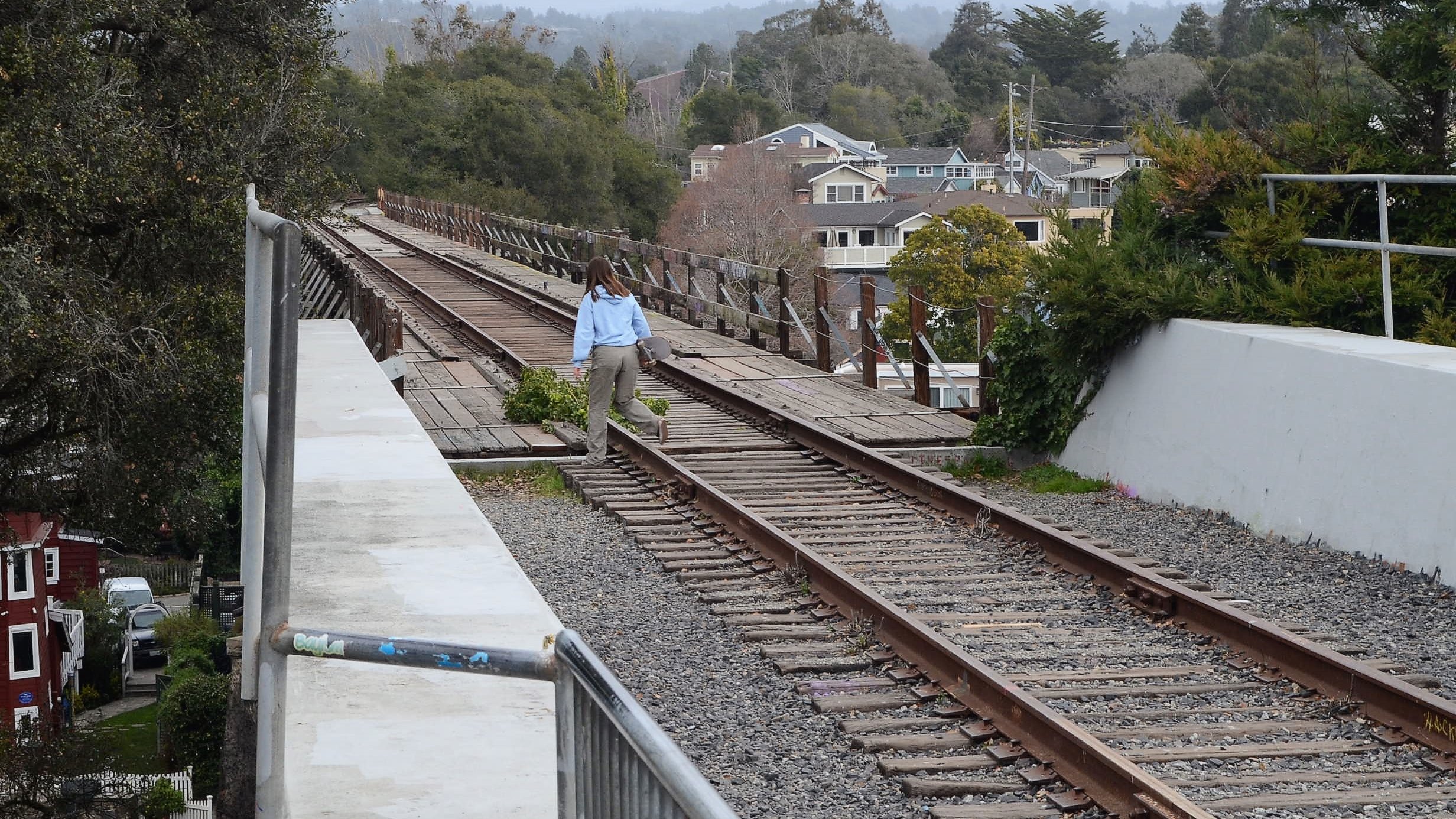
The Santa Cruz County Regional Transportation Commission on Thursday reaffirmed its support for a paved path parallel to the train tracks through Capitola and Seacliff. (Stephen Baxter — Santa Cruz Local file)
SANTA CRUZ >> The Santa Cruz County Regional Transportation Commission on Thursday reaffirmed its support for a trail parallel to the train tracks through Live Oak, Capitola and Seacliff — leaving the door open for passenger rail service.
But the decision to accept state money and move forward with the rail-trail plans still rests with the Santa Cruz County Board of Supervisors. County supervisors deferred acceptance of a $68 million state grant for the project in March and delayed a decision on the trail design. They plan to revisit both matters April 30.
During Thursday’s special meeting, the transportation commission directed its staff to research the possibility of transferring the grant to the commission from the County of Santa Cruz. That would allow the commission to pursue grant money and trail construction without the county’s input.
County supervisors would need to vote to approve the grant transfer, said Santa Cruz County spokesman Jason Hoppin.
Thursday’s meeting also continued a yearslong battle between transportation commissioners who said that advancing plans for passenger rail service would be fiscally irresponsible, and others who said those concerns were ways to obstruct rail service that a majority of county voters have signaled that they want.
“It’s a long road,” said Paula Bradley, a member of Friends of the Rail and Trail.
Bradley said Thursday’s vote to advance the rail and trail project from Live Oak to Seacliff was an incremental victory. “We’ve been in the process so long, you know, so that makes it very difficult to celebrate,” said Bradley.
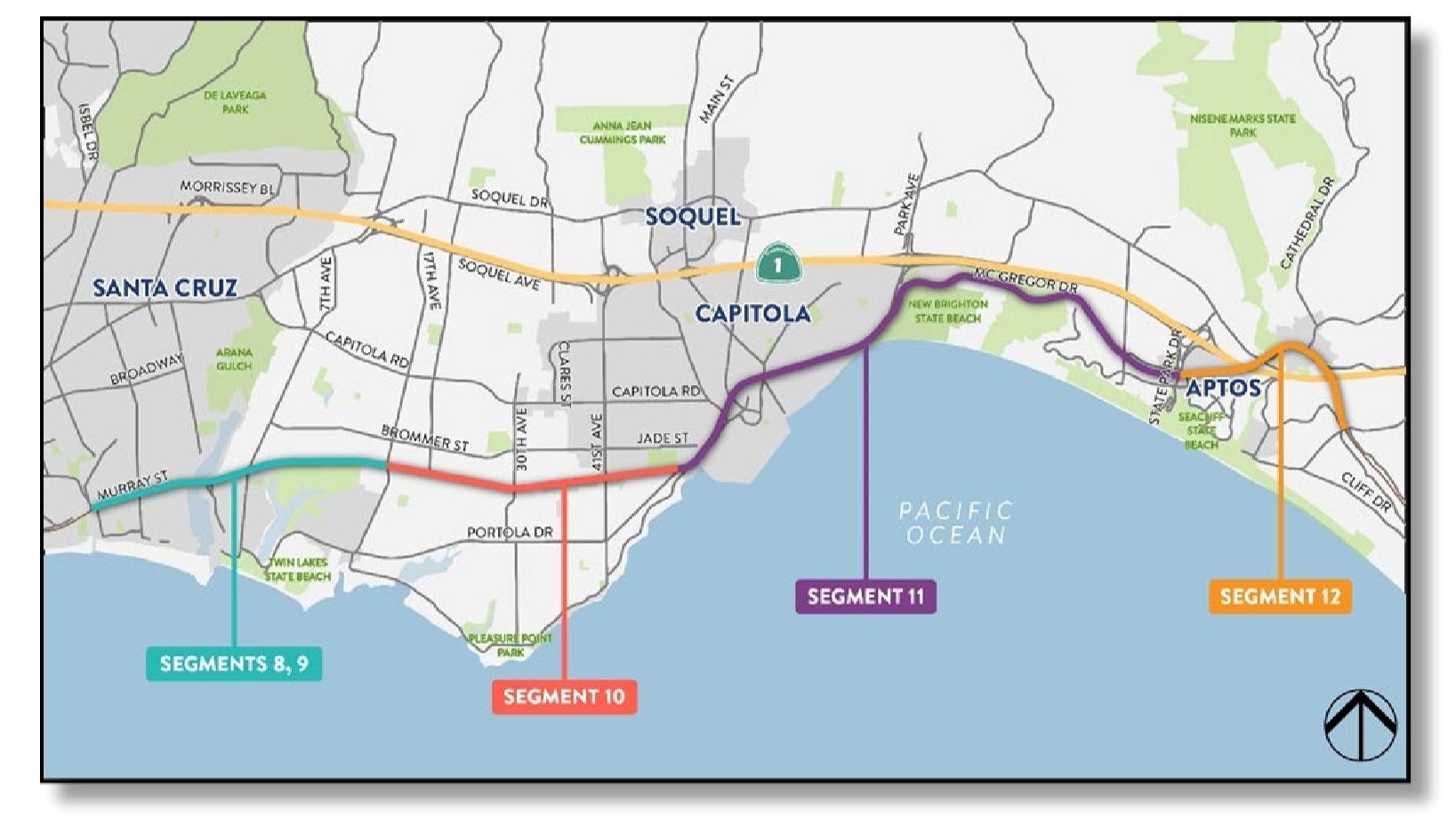
A Santa Cruz County supervisors vote on March 26 stalled plans for Segments 10 and 11 of the Coastal Rail Trail. (Santa Cruz County Regional Transportation Commission)
The transportation commission voted 8-2 to:
- Explore steps needed to transfer a state grant to the transportation commission from the county.
- Support a trail next to tracks for Segments 10 and 11.
- Direct commission staff to work with county staff to find ways to cut construction costs.
- Pursue more grants and earmarks for the segments.
- Accept the environmental report for Segments 10 and 11.
- Pursue negotiations with Roaring Camp Railroad to pay to relocate freight rails on the segments. Unlike previously-built segments, construction of a trail on Segments 10 and 11 requires the rails to be moved.
- Research a suggestion by Commissioner and Watsonville City Councilmember Eduardo Montesino to allocate the bulk of Measure D funds to rail-trail segments in South County.
Sandy Brown, Felipe Hernandez, Randy Johnson, Mike Rotkin, Eduardo Montesino, Larry Pageler, Andy Schiffrin and Robert Quinn voted yes.
Virginia Johnson and Shane Mckeithen voted no.
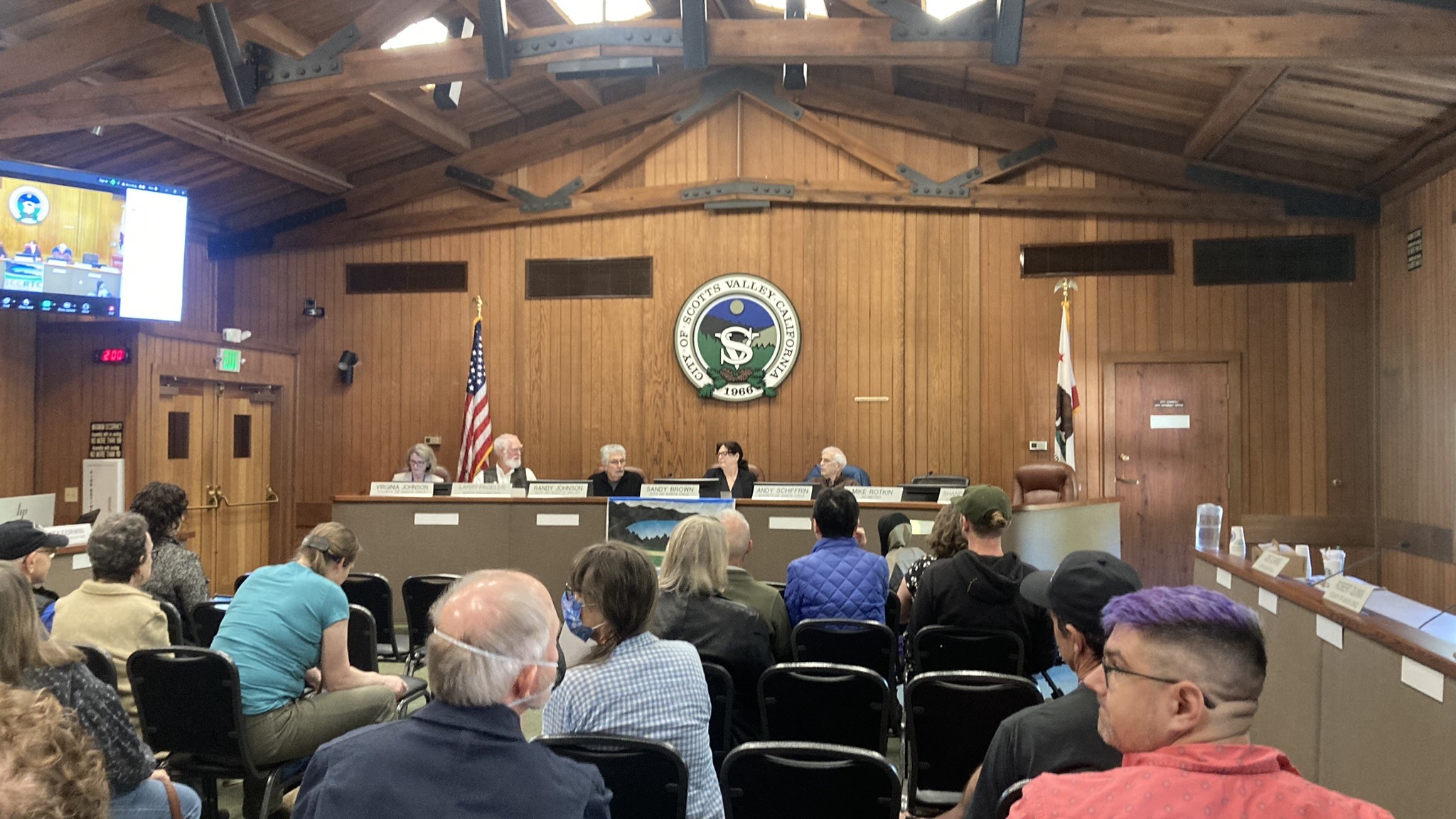
The Santa Cruz County Regional Transportation Commission deliberates Thursday in the Scotts Valley City Council chamber. (Jesse Kathan – Santa Cruz Local)
Grant money and a funding gap
At a March 26 county supervisors meeting, the supervisors deferred acceptance of a $68 million grant from the California Transportation Commission to help construct Segments 10 and 11 of the rail trail. County staff were scheduled to accept the grant in June, but now plan to seek an extension. The state commission grants extensions up to 20 months.
Mitch Weiss, interim executive director of the regional transportation commission, said Thursday that extensions are usually approved and likely wouldn’t affect the county’s ability to win future transportation grants.
“Failure to deliver the project is, I think, what is viewed as problematic,” Weiss said.
Although most of the trail for Segments 10 and 11 would be paid for with the $68 million state grant, the project has a $28 million funding gap.
Several commissioners and residents said the project shouldn’t move forward without more money. Others said concerns about funding and equity are disingenuous attempts to obstruct and delay the rail trail.
Lani Faulker, a member of Equity Transit and a former county supervisor candidate, said projects to widen Highway 1 have been repeatedly approved despite not being fully funded. “Certain commissioners have chosen different criteria, depending on which project they are reviewing,” she said.
“Every time a commissioner who is opposed to rail has an opportunity, there are machinations and something to gum up the works,” said transportation commissioner and Santa Cruz City Councilmember Sandy Brown.
“Frankly, I’m getting to the point where I just want to ask my colleagues: if you oppose this, why not just be honest and make a motion to return” the state grant? Brown asked.
Commissioner and Scotts Valley Mayor Randy Johnson rejected that claim. “Being fiscally responsible, that’s not being obstructionist. That’s us doing our job,” Johnson said.
At the March county supervisors meeting, Supervisors Bruce McPherson and Manu Koenig raised similar concerns. McPherson and Koenig sit on the regional transportation commission, but neither attended Thursday’s meeting. Their alternates, Virginia Johnson and Shane Mckeithen, voted against support of a trail next to the train tracks.
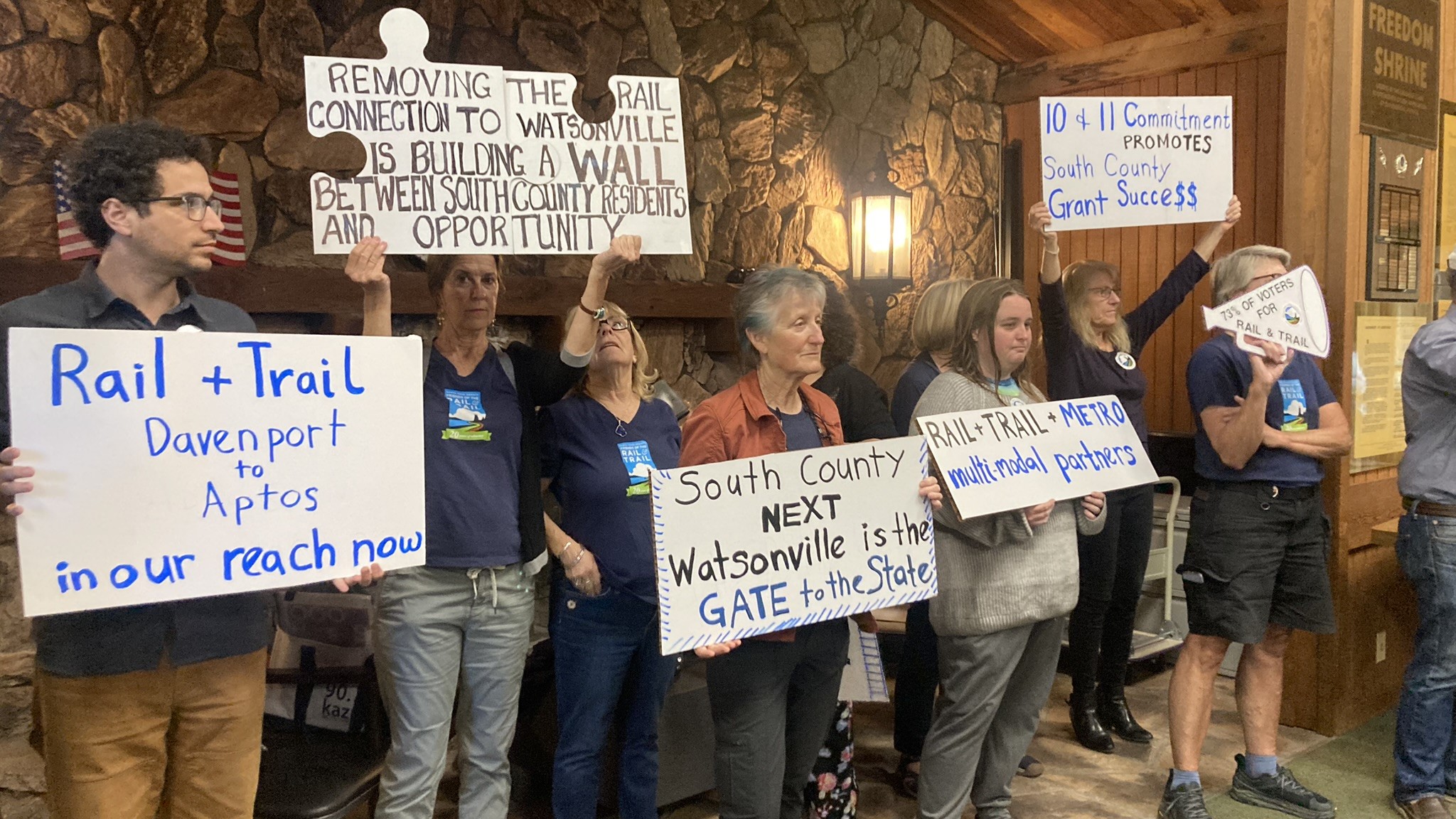
Members of Friends of the Rail and Trail advocate for a trail next to the railroad tracks at a Santa Cruz County Regional Transportation Commission meeting Thursday. (Jesse Kathan— Santa Cruz Local)
South County money
Regional transportation commission staff said they have applied for more state and federal funds to fill the project’s funding gap, but suggested that money from the regional transportation commission’s 2017 Measure D sales tax could also help.
Some commissioners said the plan would take money away from trail construction and maintenance in South County. Grant funding usually is not available for maintenance, said Grace Blakeslee, senior transportation director of the transportation commission.
Johnson said spending Measure D money on Segments 10 and 11, and recent cost increases for Segments 8 and 9 in the City of Santa Cruz, would “rob the fund” of money for a trail in South County.
“It’s not reasonable to say mid and North County, they only get what they want,” Johnson said. “Proper stewardship of public dollars and social equity and justice are fundamental to our responsibilities on this dais.”
Measure D funds could cover trail construction in mid-county and South County, but could not also fund trail maintenance, according to a transportation commission staff report.
Commissioner and Santa Cruz County Supervisor Felipe Hernandez said the commission should prioritize equity by committing to pursue projects in South County.
“People talked about South County and equity today, and I hope it wasn’t just for the sake of putting it out there,” Hernandez said.
‘Ultimate’ version versus interim
The commission on Thursday also voted to support the “ultimate trail,” a walking and biking path parallel to the train tracks, on Sections 10 and 11. County supervisors would need to also support the design for it to move forward.
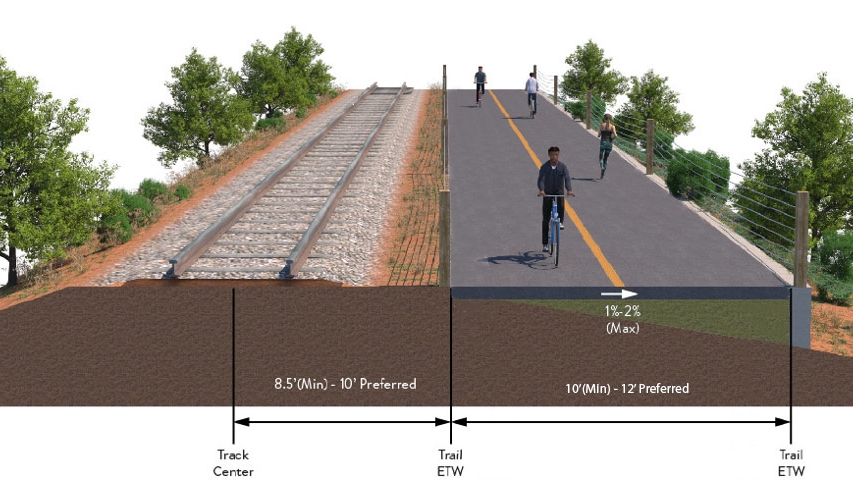
A 2022 rendering shows the “ultimate” plan of a trail parallel to the train tracks. Distances on this image may not be uniform throughout the rail-trail project. (Santa Cruz County Regional Transportation Commission)
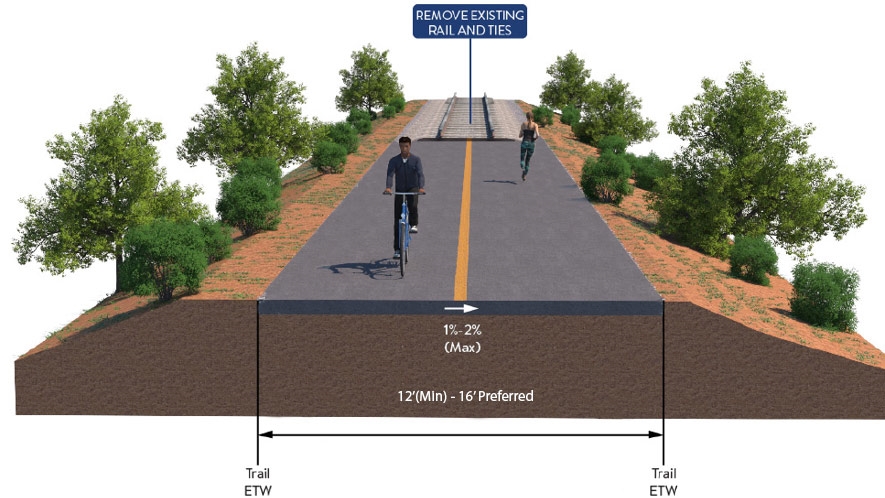
A 2022 rendering shows the “interim” plan with a trail temporarily replacing the train tracks. Distances on this image may not be uniform throughout the rail-trail project. (Santa Cruz County Regional Transportation Commission)
The environmental report for the sections includes two other design options:
- An “interim” trail where the railroad tracks now stand. It would be replaced by a permanent path parallel to the tracks.
- A “trail only” design without plans for passenger rail service.
The “interim” trail would require the Regional Transportation Commission to remove the rail track through a process called railbanking. Railbanking has long been a point of contention in the commission. While some commissioners point out it wouldn’t preclude future passenger rail and could even reduce costs for passenger rail design, others said it would likely lead to a multi-year battle with Roaring Camp, the operator of the freight line.
To use the state grant to pursue the interim trail, county staff would need to request the California Transportation Commission to change to the terms of the grant. The commission would likely not grant the request before the freight line was railbanked, commission staff said.
The environmental report was commissioned before the failure of Measure D in 2022. In that election, more than 73% of voters voted that the county’s General Plan should not be changed to favor a paved trail only. Rail-trail advocates have said the vote signals support for the ultimate trail and the passenger rail project.
The vote does not require the transportation commission or the county to pursue the ultimate trail or passenger rail, said county spokesperson Jason Hoppin.
Correction: An earlier version of this story incorrectly stated the commission’s vote tally. It was 8-2.
Read more
- Rail-trail money threatened after Santa Cruz County supervisors vote — March 29, 2024
- Santa Cruz rail trail, housing updates — March 25, 2024
- Passenger rail construction expected to start in 2032 in Santa Cruz County — February 9, 2024
- Rail-trail permits approved in Santa Cruz, part of Live Oak — March 21, 2023
Questions or comments? Email [email protected]. Santa Cruz Local is supported by members, major donors, sponsors and grants for the general support of our newsroom. Our news judgments are made independently and not on the basis of donor support. Learn more about Santa Cruz Local and how we are funded.
Jesse Kathan is a staff reporter for Santa Cruz Local through the California Local News Fellowship. They hold a master's degree in science communications from UC Santa Cruz.




